Related Blogs
Table of Content
- What is Serverless Architecture?
- What is FaaS?
- How Serverless Architecture Works?
- Benefits and Drawbacks of Serverless Architecture
- Use Cases of Serverless Architecture
- Real-Life Examples of Serverless Architecture
- Comparison of Serverless with other Cloud Backend Models: BaaS vs PaaS vs IaaS
- Final Thoughts
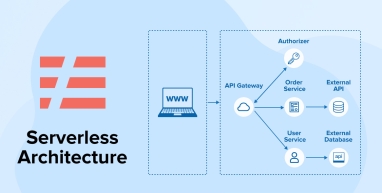
Backend infrastructure management and maintenance are a huge responsibility and cost-incurring factor in application development. Traditionally, organizations depended on dedicated servers, virtual machines, or containers to host their applications, requiring significant time and effort. The rise of cloud computing has provided a solution to streamline this process. It has transformed application hosting by offering on-demand access to the required computing resources without investing in expensive physical infrastructure. A software development company can grow rapidly, leveraging the support of cloud services.
However, cloud computing often results in inefficient resource utilization, leading to both overuse and underuse of resources. Serverless architecture has surfaced as a groundbreaking paradigm, overcoming the limitations of traditional cloud computing service models. It lets developers write code without any operational overhead of managing backend services. This approach speeds up the application development process, thus helping businesses quickly adapt to changing demands.
In this blog, we’ll explore serverless architecture, how it works, the role of FaaS, its benefits and drawbacks, real-world use cases, and a comparison with other cloud models.
1. What is Serverless Architecture?
Serverless architecture is a software design approach where developers are only concerned with implementing the business logic and deploying the application without managing the underlying infrastructure. In this model, a cloud provider manages the servers that run the application code. Despite the term “serverless”, servers are still involved; however, it’s just a development practice that abstracts the server management from the development task and gives it to the third-party cloud provider. The serverless vendor provides the server resources whenever required instead of allocating a fixed server space in advance.
2. What is FaaS?
FaaS is the abbreviation of Function as a Service, a foundational element of serverless architecture. FaaS is a cloud computing model where developers write modular, event-driven functions that perform specific tasks. The triggering of events, such as HTTP requests, database changes, or message queue updates, lets the function execute on remote servers. Popular serverless platforms offering FaaS include Google Cloud Functions, AWS Lambda, and Microsoft Azure Functions, provided by Google, Amazon Web Services, and Microsoft, respectively.
3. How Serverless Architecture Works?
We’ve now understood FaaS (Function as a Service), the basic concept of serverless computing. However, to understand the dynamics and workings of serverless applications, you also need to be familiar with the following fundamental terms associated with serverless architecture:
- Invocation: Execution of individual functions in response to an event.
- Duration: The time a serverless function takes to run during an invocation.
- Event: Various happenings like HTTP requests, database changes, file uploads, timers, or external services that initiate the serverless function execution. It makes serverless solutions event-driven.
- Stateless: Functions devoid of state or memory between invocations.
- Cold Start: Delay period during the first invocation or after quite a long period of inactivity.
- Warm execution: Invocation with all the assigned resources and an initialized runtime environment, resulting in an increased execution speed.
- Concurrency Limit: Simultaneous execution of function instances in a particular region specified by the cloud provider.
- Timeout: The time limit specified by the cloud provider for a function execution before its termination.
- Orchestration: Coordination of multiple functions or microservices execution simplifies workflows and business processes.
Below is the step-by-step process of how serverless architecture operates, as depicted in the figure above.
- Writing function code: Programmers first write the app code as a set of independent functions packaged in a container. A function’s underlying code determines how the app responds to specific user actions.
- Uploading to FaaS: Once developed, functions are uploaded on a reliable FaaS platform such as AWS Lambda. They are your typical cloud providers responsible for managing your application on cloud and ensure efficient code execution.
- Managed infrastructure: The cloud provider handles all the aspects of the underlying infrastructure, be it server provisioning, scaling, availability, patching, operating system, and other. The developer has no role in this.
- Event-driven execution: The cloud provider executes the function triggered by an event in ephemeral containers. It decides whether the function must run on an active server or requires a new server.
- Task performance: The functions perform their respective roles, such as integrating with third-party services.
- Ephemeral containers: A temporary container that gets triggered during invocation and destroyed after the execution completes. The cloud provider handles its creation and destruction automatically.
- Compute time billing: Companies taking the serverless services have to pay for it according to the time consumed while executing the serverless functions.
4. Benefits and Drawbacks of Serverless Architecture
Let’s take a look at the pros and cons of the serverless architecture:
4.1 Advantages of Serverless Architecture
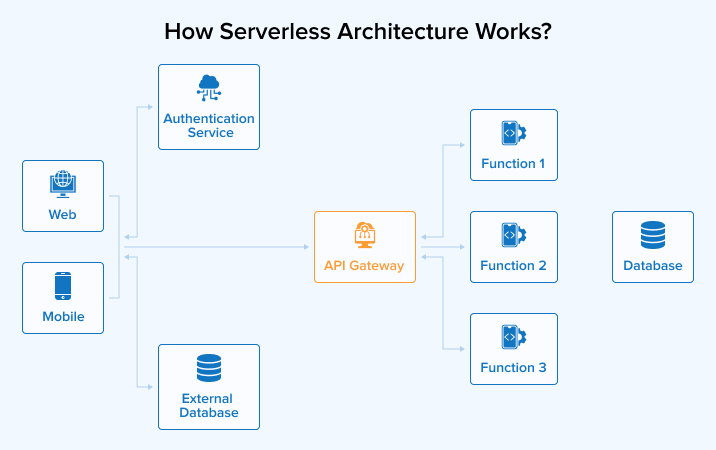
The following are the reasons that are driving the software industry toward serverless computing:
- Cost-efficient: You need to pay only for the required resources at the time of requirement. Thus, licensing fees, hardware expenses, and maintenance cost is saved associated with the cloud architecture.
- Increased scalability: The resources are easily scaled up or down as per the varying requirements. Serverless platforms automatically create or delete function instances in response to varying traffic without any manual configuration.
- Faster time-to-market: Serverless environments increase the deployment speed as developers no longer get involved in the intricacies of traditional servers and focus on building and testing the business logic. Therefore, serverless apps reach the production stage by following fewer steps.
- Flexibility: Applications built using managed services are easy to adapt to emerging needs, thus increasing agility in the development.
- Speedy code execution: The vendor can run the code on servers near the end user, hence users receive fast responses to their requests. No origin server is involved here for hosting the application, contributing to delays.
4.2 Limitations of Serverless Architecture
- Vendor lock-in: There are chances that you cannot switch between multiple cloud providers if necessary, as you’re reliant on a particular provider for all the managed services.
- Not suitable for long-running processes: You are charged based on the computation time, hence long-running workloads may prove costly in serverless computing.
- Cold start latency: Functions invoked after a period of inactivity take time to execute, as initializing a serverless environment takes time.
- Limited control: The use of a serverless platform is subject to the terms and conditions of the provider, thus, very little or no control over the server hardware infrastructure.
5. Use Cases of Serverless Architecture
Serverless applications are meeting the needs of different industries owing to their flexibility and scalability. The following are the prominent use cases of serverless architecture:
- Data processing pipelines: Serverless functions can process huge volumes of real-time data, therefore suitable for building data processing pipelines. Such pipelines will process data, analyze patterns, and store the results for other uses.
- Asynchronous processing: Serverless functions often run in the background without blocking or delaying the user’s actions on the front-end part of the application.
- Chatbots and Virtual Assistants: Event-driven stateless serverless functions treat every interaction as an isolated event where every question triggers an invocation, resulting in no delay in response.
- Cron jobs: Developers can schedule tasks to run at specific times without managing the infrastructure. The serverless functions scale automatically according to the rise in traffic and run even if they fail as they are fault-tolerant.
- Authentication and authorization: The serverless approach executes user verification only when needed, rather than keeping a dedicated authentication server running continuously.
- Machine learning inference – ML models can be deployed without dedicated infrastructure as the functions get triggered only when an inference request is made.
6. Real-Life Examples of Serverless Architecture
Now that you’ve understood serverless architecture in so much detail, can you think of some real-world serverless applications? Look below and recall your concepts:
6.1 Coca-Cola Vending Machine
Coca-Cola’s vending machine, called Freestyle, is a serverless smart vending machine. Customers can order and pay for their drinks online and receive them with a confirmation message on their mobile phones. The adoption of serverless computing decreased their operating costs by almost sixty percent.
6.2 Netflix Scalable On-demand Media Delivery
Netflix adopted the serverless platform AWS Lambda in 2017. The Dynamic Scripting Platform handles real platform modifications, provisioning, and end-user delivery.
6.3 Slack Chatbots
Chatbots have become an integral part of Slack’s value proposition by enhancing user productivity, collaboration, and task automation. These bots can respond to queries, integrate with third-party services, automate repetitive tasks, and trigger workflows based on certain events.
7. Comparison of Serverless with other Cloud Backend Models: BaaS vs PaaS vs IaaS
Let us now compare FaaS with similar cloud computing service models: BaaS, PaaS, and IaaS. Though these cloud backend models share similarities with the serverless or FaaS model, they do not qualify for the serverless architecture.
- Backend-as-a-Service (BaaS): The BaaS model is for mobile and web app development. The development team writes and maintains the front-end code, whereas the third-party cloud provider handles storage systems, hosting, APIs, databases, security updates, etc., backend services. Firebase (by Google), AWS Amplify, Parse (by Facebook), etc., are some of the major BaaS providers.
- Platform as a Service (PaaS): PaaS providers give their cloud platform on rent to organizations to develop, deploy, and manage applications, thus freeing them from infrastructure setup and management. However, scaling requires manual intervention. It even follows a pay-as-you-go or fixed pricing, unlike FaaS, which follows a pay-per-use pricing structure. Heroku, Google App Engine, Microsoft Azure App Service, and AWS Elastic Beanstalk are major PaaS providers.
- Infrastructure-as-a-service (IaaS): The IaaS model delivers on-demand cloud infrastructure resources to developers such as virtual machines, servers, hard drives, middleware, etc, via the Internet. Here, buyers have higher control over the underlying infrastructure, like the traditional on-premises infrastructure. Amazon Web Services (AWS), Microsoft Azure, Google Cloud Platform (GCP), IBM Cloud, etc., are major IaaS providers.
8. Final Thoughts
Serverless architecture is best suited for event-driven applications that take less execution time, allowing you to pay only for the used compute time, instead of unnecessary server space. This is especially beneficial for workloads with variable traffic, such as during promotional events or viral content, as it automatically scales to meet demand and scales down when traffic decreases, reducing costs. However, not every application development can adapt to serverless principles. We saw that serverless computing has introduced its own set of challenges that need to be overcome to increase its utilization efficiency.
We’ve tried to explain this quite complex concept most simply and lucidly. You may still find difficulty in understanding the underlying concepts initially. But take it slow and follow a sequential learning approach to grasp them.
FAQs
What is a serverless architecture?
Serverless architecture is a software design approach in which developers write code and deploy applications without managing server infrastructure.
Is Kubernetes a serverless architecture?
No. Kubernetes is a largely accepted open-source container orchestration platform for managing containerized apps. But Kubernetes-based serverless frameworks can run serverless applications on Kubernetes clusters.
Why is serverless used?
Serverless is used to eliminate the infrastructure management responsibility so that developers can code without worrying about it, while automatically scaling resources based on demand.

Vishal Shah
Vishal Shah has an extensive understanding of multiple application development frameworks and holds an upper hand with newer trends in order to strive and thrive in the dynamic market. He has nurtured his managerial growth in both technical and business aspects and gives his expertise through his blog posts.
Related Service
Cloud and DevOps
Know more about Cloud and DevOps services
Learn moreAbout Cloud and DevOpsSubscribe to our Newsletter
Signup for our newsletter and join 2700+ global business executives and technology experts to receive handpicked industry insights and latest news
Build your Team
Want to Hire Skilled Developers?

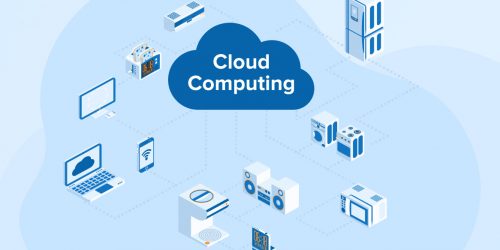
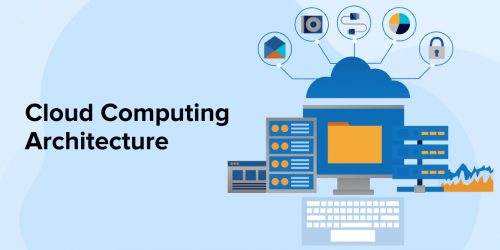
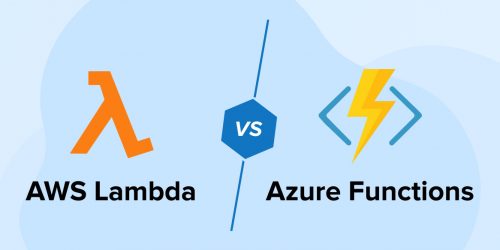

Comments
Leave a message...